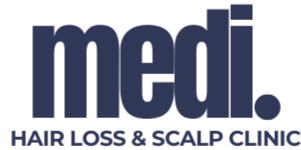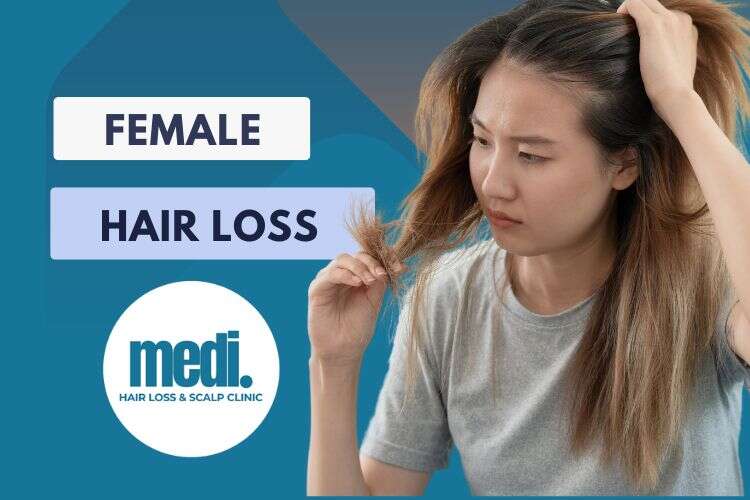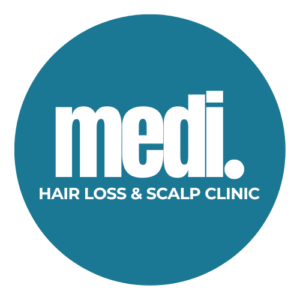Treatments for Hair Loss in Women
Fortunately, various treatment options are available to address female hair loss, ranging from topical medications to surgical interventions. The most suitable treatment approach depends on hair loss’s underlying cause and severity.
1. Topical Treatments
Minoxidil, known by its brand name Rogaine, is a popular FDA-approved medication for treating female pattern hair loss. This over-the-counter product has been proven effective in stimulating hair growth and preventing further thinning. By directly applying minoxidil to the scalp, individuals experiencing hair loss can potentially see improvements in their condition.
In addition to minoxidil, other topical treatments are available for specific conditions like alopecia areata. These treatments may include corticosteroids and anthralin, which can be prescribed by a healthcare professional. It’s important to consult with a doctor or dermatologist to determine the best course of treatment based on individual needs and circumstances.
Remember that consistency is key when using these topical treatments, as results may take time to become noticeable. With proper use and adherence to the recommended dosage, minoxidil and other topical treatments can offer hope for those struggling with hair loss.
2. Oral Medications
Finasteride, sold under the brand name Propecia, is a popular oral medication that effectively blocks the production of dihydrotestosterone (DHT) in the body. DHT is a hormone that plays a significant role in male pattern baldness, making finasteride an effective treatment for this condition.
However, finasteride can also be prescribed off-label for women who are experiencing androgenetic alopecia, even though its use in women remains controversial due to potential side effects. Despite the controversy surrounding its use in women, some doctors believe that finasteride can be beneficial for certain female patients.
So, it is crucial for anyone considering taking finasteride to weigh the potential benefits against the possible risks and side effects associated with this medication. As with any medication, always consult with a healthcare professional before starting or stopping finasteride to ensure it is the right choice for you.
3. Platelet-Rich Plasma (PRP) Therapy
PRP therapy has emerged as a promising solution for individuals struggling with hair loss. This innovative treatment stimulates hair growth and enhances hair density by harnessing the power of platelets found in the patient’s blood. The procedure involves extracting and injecting these platelets directly into the scalp, targeting areas affected by conditions such as androgenetic alopecia and telogen effluvium.
As opposed to traditional methods, PRP therapy offers a natural alternative that utilizes the body’s own healing mechanisms. This non-surgical approach is favored by many due to its minimal invasiveness and lack of side effects.
Moreover, PRP therapy has shown encouraging results in various clinical studies, further bolstering its credibility as an effective hair regrowth treatment. Patients undergoing this procedure often experience improvements in both the quality and thickness of their hair, leading to increased confidence and satisfaction.
4. Hair Transplantation
Hair transplantation is another solution for women experiencing advanced hair loss or those with alopecia areata that have developed into alopecia totalis or universalis. During this procedure, healthy hair follicles are extracted from donor areas and transplanted into regions of the scalp experiencing thinning or balding. The result is a long-lasting solution to hair loss, providing women with renewed confidence and self-esteem.
Hair transplantation offers a permanent fix, unlike temporary solutions such as wigs or extensions. Harvesting and relocating healthy hair follicles allows for natural-looking results that blend seamlessly with the rest of the patient’s hair.



